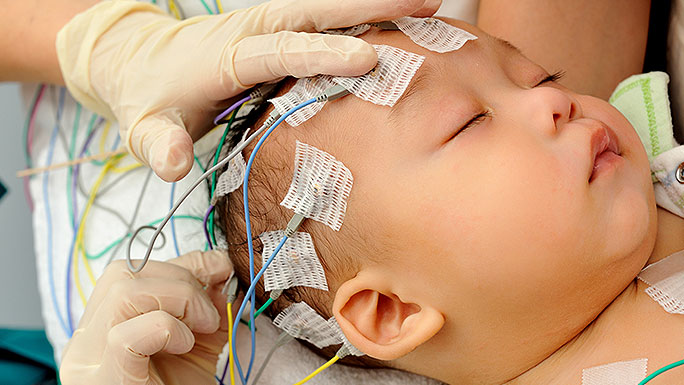With VEEG, your child is videotaped while the EEG is recorded. The recording is usually carried out over several days. The doctor usually views the video and EEG images side-by-side on a split screen. This way, your child's doctor can see exactly how your child’s behavior during seizures is related to the electrical activity in his or her brain.
Because your child is in the hospital under close supervision, we allow them to have some seizures, which our experts can study. The doctor may reduce or even stop seizure medicines to make seizures more likely. Other techniques include sleep deprivation, hyperventilation (very rapid or deep breathing) and exercise.
VEEG is most helpful in determining whether seizures with unusual features are actually epilepsy, identifying the type of seizures and pinpointing the region of the brain where seizures begin. Locating the region precisely is essential if epilepsy surgery is being considered.

